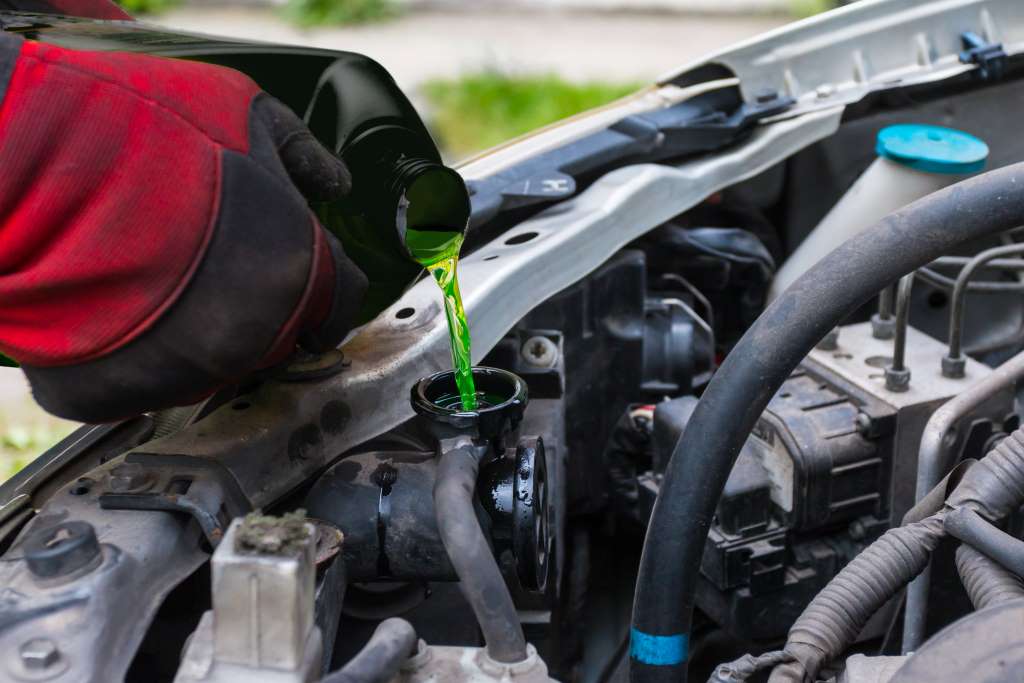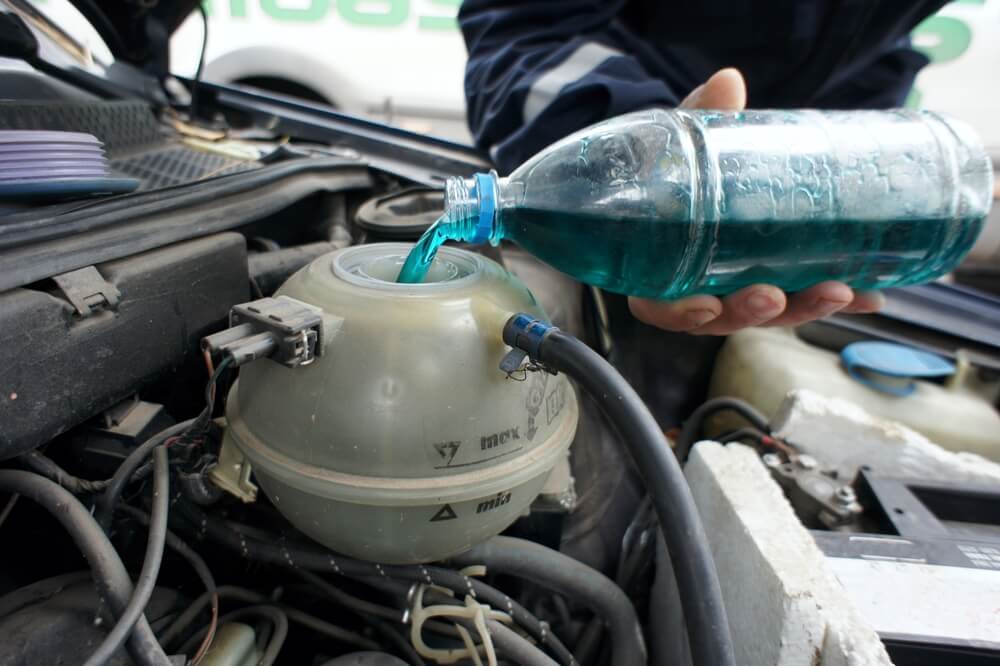No, the car does not need to be running when adding coolant. In fact, adding coolant to a running car can be dangerous.
Coolant is essential for keeping your engine cool and preventing overheating. Understanding the right way to add coolant can save you from potential hazards. If you are unsure about the process, you are not alone. Many car owners have the same question.
In this blog post, we will explain why the engine should be off and cool before you add coolant. We will also cover the basics of how to safely add coolant to your car. This will help you maintain your vehicle properly and avoid costly mistakes. So, let’s dive into the details and keep your car running smoothly.
Introduction To Car Coolant
Adding coolant to your car should be done with the engine off. This prevents potential burns from hot components. Always ensure the car is cool before adding fluid.
Car coolant plays a crucial role in your vehicle’s engine. It helps regulate the engine’s temperature. Without it, your engine could overheat. This can lead to serious damage. Knowing about car coolant is important for every driver.Purpose Of Coolant
Coolant keeps your engine from getting too hot. It also prevents freezing in cold weather. Coolant circulates through the engine. This helps maintain a stable temperature. It protects your engine from wear and tear.Importance Of Proper Levels
Keeping the right coolant level is vital. Too little coolant can cause overheating. Too much can lead to pressure build-up. Regularly check the coolant level. Refill it as needed. Always use the right type of coolant for your car. This ensures your engine runs smoothly. “`When To Check Coolant
Knowing when to check your car’s coolant is essential. It keeps your engine from overheating. Regular checks help maintain your car’s performance. But when is the best time to check the coolant?
Signs Of Low Coolant
Look for signs that your coolant is low. Your engine may overheat. You might see a warning light on the dashboard. The heater might not work well. You could also notice a sweet smell from the engine. Any of these signs mean it’s time to check the coolant.
Routine Maintenance
Routine maintenance is key. Check the coolant level once a month. Always check it when the engine is cold. This ensures an accurate reading. It also prevents burns from hot coolant. Keep your car’s manual handy. Follow the manufacturer’s guidelines for coolant checks. Regular checks can save you from costly repairs.
Adding Coolant: Safety Precautions
Adding coolant to your car is crucial for maintaining engine health. But it’s important to follow safety precautions. This ensures the process is smooth and safe.
Protective Gear
Always wear protective gear. Use gloves to protect your hands. Coolant can be harmful on direct contact. Safety goggles are also important. They protect your eyes from any splashes.
Proper Ventilation
Ensure you are in a well-ventilated area. Coolant fumes can be harmful. Open your garage door or move your car outside. Fresh air is essential for safety. Avoid confined spaces.

Credit: www.autonationmobileservice.com
Engine Condition During Coolant Addition
Adding coolant to your car is a critical task. The engine condition during this process is vital for safety and effectiveness. Understanding if the engine should be on or off can prevent damage and ensure proper functioning.
Engine Off Vs. Running
Many drivers wonder whether the engine should be running when adding coolant. The safest method is to add coolant when the engine is off. This is because a running engine can be very hot.
When the engine is off, the coolant system is at a lower pressure. This makes it safer to open the radiator cap and add coolant. Conversely, adding coolant to a running engine can be risky due to the high temperature and pressure.
| Condition | Safety | Effectiveness |
|---|---|---|
| Engine Off | High | Optimal |
| Engine Running | Low | Risk of Ineffectiveness |
Potential Risks
Adding coolant with the engine running poses several risks. One major risk is burn injuries. The radiator and other parts can be extremely hot. Opening the cap can release hot steam and coolant.
Another risk is engine damage. Cold coolant entering a hot engine can cause a thermal shock. This can crack the engine block or other components. Additionally, the system pressure can lead to coolant loss or improper mixing.
- Burn injuries from steam and hot coolant
- Thermal shock causing engine damage
- Coolant loss due to system pressure
To avoid these risks, always ensure the engine is off and cool before adding coolant. This simple step can protect you and your vehicle.
Steps To Add Coolant
Adding coolant to your car is essential for maintaining engine temperature. It’s important to follow specific steps to ensure your engine stays cool and runs smoothly. Below are the detailed steps to add coolant safely and effectively.
Preparation
Before you start, make sure you have everything you need:
- Coolant (Check your car’s manual for the right type)
- Funnel
- Gloves
- Rags or paper towels
Important: Ensure the engine is off and cool before adding coolant. Hot engines can cause burns and other injuries.
Filling Process
Follow these simple steps to add coolant:
- Open the hood and locate the coolant reservoir. It’s usually a translucent plastic tank near the radiator.
- Remove the cap from the coolant reservoir carefully. If the engine was running recently, do this slowly to release any built-up pressure.
- Place a funnel in the reservoir opening to prevent spills.
- Slowly pour the coolant into the funnel, filling the reservoir to the “Full” or “Max” line. Do not overfill.
- Replace the cap securely on the coolant reservoir.
- Check for any spills and wipe them up with rags or paper towels.
After filling, start the engine and let it run for a few minutes. This allows the new coolant to circulate through the system. Check the coolant level again and top it off if needed.
Following these steps ensures your engine stays cool and runs efficiently. Always refer to your car’s manual for specific instructions.

Credit: carfromjapan.com
Types Of Coolant
When it comes to maintaining your car, understanding the types of coolant is essential. Coolant, also known as antifreeze, helps regulate your engine’s temperature. Using the right type ensures your engine runs smoothly and avoids overheating.
Different Formulations
Coolants come in various formulations. Each type has unique properties that suit different engines. Here are the common types:
- Inorganic Additive Technology (IAT): Typically green, used in older cars.
- Organic Acid Technology (OAT): Common in newer vehicles, often orange or red.
- Hybrid Organic Acid Technology (HOAT): A mix of IAT and OAT, available in various colors.
Choosing The Right Coolant
Choosing the right coolant is crucial for your car’s health. Always refer to your vehicle’s manual for recommendations. Here are some tips:
- Check the color of your current coolant.
- Read the vehicle manufacturer’s specifications.
- Consider the climate you live in.
Using the right coolant helps prevent corrosion and engine damage.
Common Mistakes To Avoid
Adding coolant to your car can seem simple, but many make mistakes. These mistakes can harm the engine. Knowing what to avoid is key.
Overfilling
One common mistake is overfilling the coolant. Too much coolant can cause pressure in the cooling system. This can lead to leaks or damage. Always check the fill line. It shows the proper level. When in doubt, add a little and check again.
Mixing Coolants
Mixing different coolants can be harmful. Each type has a unique formula. Mixing can cause a chemical reaction. This can damage the cooling system. Always use the coolant recommended for your car. Check the manual if unsure.

Credit: driving-tests.org
After Adding Coolant
After adding coolant, there are crucial steps to ensure your car runs smoothly. These steps help maintain your engine’s health. Let’s explore them in detail.
Checking For Leaks
Once you add the coolant, check for any leaks around the engine bay. Leaks can lead to engine overheating. To check for leaks, follow these steps:
- Inspect the radiator and hoses for any signs of leaking fluid.
- Look under the car for any coolant puddles.
- Check the radiator cap for cracks or damage.
If you find leaks, fix them immediately. This prevents further damage to your engine.
Monitoring Coolant Levels
After adding the coolant, monitor the levels for the next few days. This ensures the system is working correctly. Here’s how:
- Start the engine and let it run for a few minutes.
- Turn off the engine and let it cool down.
- Check the coolant level again. It should be between the “Min” and “Max” marks on the reservoir.
If the level drops significantly, add more coolant and check for leaks again. This ensures a stable engine temperature.
By following these steps, your engine will stay in good condition. This prolongs the lifespan of your vehicle.
Frequently Asked Questions
Can I Add Coolant While The Car Is Running?
No, the car should be off and cool. Adding coolant to a running engine can be dangerous.
Why Should The Car Be Off When Adding Coolant?
A hot engine can cause burns. It is safer to add coolant when the engine is cool and off.
What Happens If I Add Coolant To A Hot Engine?
It can cause burns and damage the engine. Always add coolant when the engine is cool.
How Long Should I Wait Before Adding Coolant?
Wait at least 30 minutes after turning off the engine. This ensures it has cooled down.
Can I Add Coolant Without A Mechanic?
Yes, you can add coolant yourself. Just ensure the engine is cool and follow the instructions on the coolant bottle.
Conclusion
Always add coolant when the car is off and engine is cool. This prevents burns and ensures safety. Follow your car manual for exact instructions. Regularly check your coolant levels. This helps avoid engine problems. Remember, safety first. Proper coolant management keeps your car running smoothly.
Regular maintenance is key. Keep an eye on your coolant level for a healthy engine.

















